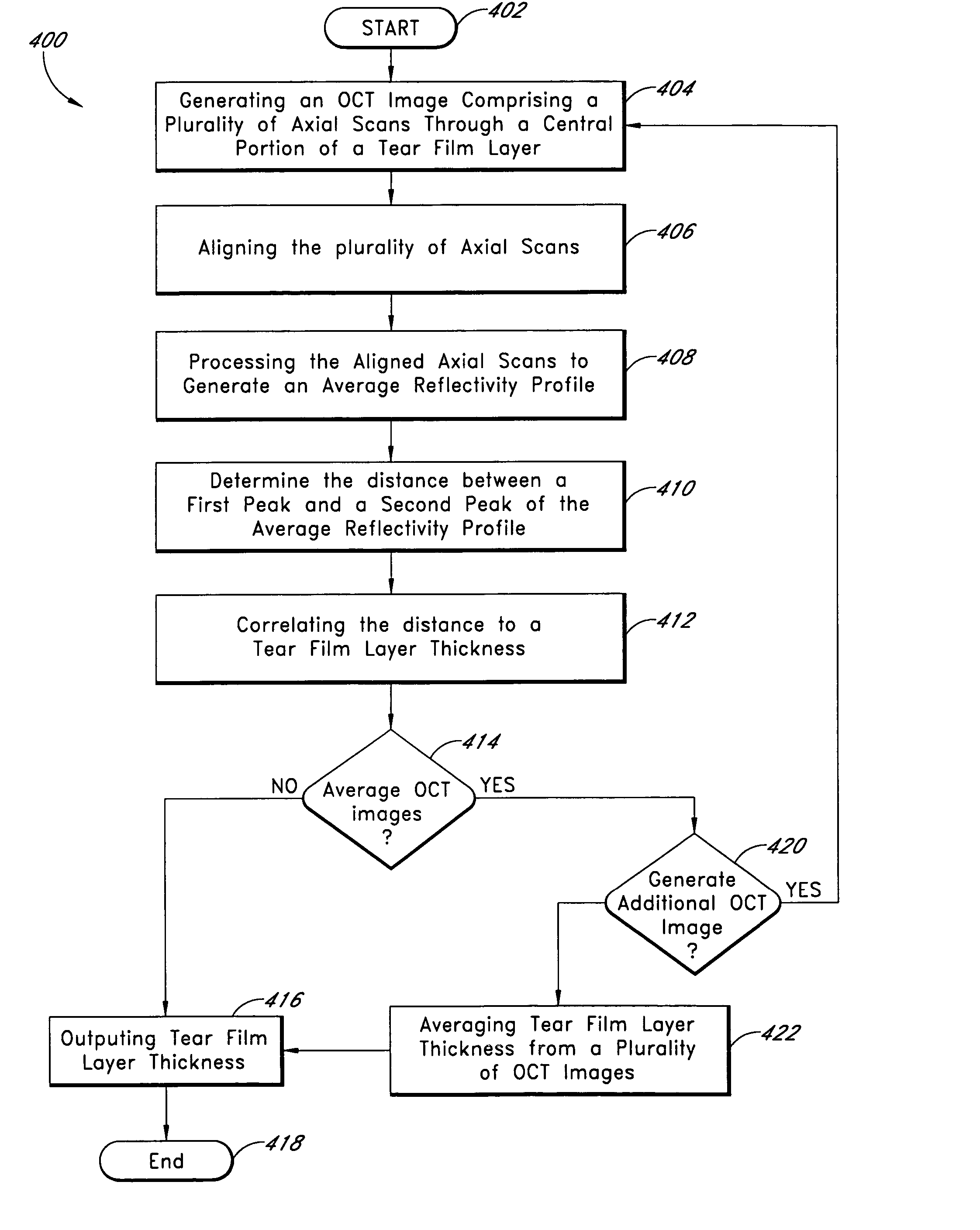Tear dynamics measured with optical coherence tomography
a technology of optical coherence and tomography, applied in the field of optical coherence tomography, can solve the problems of no objective diagnostic criteria, no objective means of evaluating treatment efficacy, and remain one of the most neglected areas of ophthalmology
- Summary
- Abstract
- Description
- Claims
- Application Information
AI Technical Summary
Benefits of technology
Problems solved by technology
Method used
Image
Examples
Embodiment Construction
[0029] The present invention involves systems and methods for rapidly measuring tear film quality and quantity. Tear film dynamics, including the thickness of the tear film and the heights of upper and lower tear menisci, are measured in real-time in a non-invasive way using OCT images. As used herein, the term “image” has its normal and customary meaning and includes the graphical representation of an object or structure as well as the data that makes up the graphical representation. As described in more detail below, an OCT image according to an embodiment is a rapidly repeatable cross-section of the tear film and the tear menisci around the both eyelids.
[0030] In an embodiment of the invention, the OCT tear film dynamic measurements are used to diagnose ocular diseases and disorders or to analyze the effectiveness of treatments for such diseases and disorders. Thus, a wide range of tear film studies can be implemented to tear film and its impact on vision, comfort and ocular int...
PUM
 Login to View More
Login to View More Abstract
Description
Claims
Application Information
 Login to View More
Login to View More - R&D
- Intellectual Property
- Life Sciences
- Materials
- Tech Scout
- Unparalleled Data Quality
- Higher Quality Content
- 60% Fewer Hallucinations
Browse by: Latest US Patents, China's latest patents, Technical Efficacy Thesaurus, Application Domain, Technology Topic, Popular Technical Reports.
© 2025 PatSnap. All rights reserved.Legal|Privacy policy|Modern Slavery Act Transparency Statement|Sitemap|About US| Contact US: help@patsnap.com



